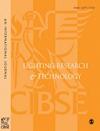Editorial: Daylight and illuminance measurement
IF 2.2
3区 工程技术
Q2 CONSTRUCTION & BUILDING TECHNOLOGY
引用次数: 0
Abstract
This issue focuses on daylight-related research and a camera-based method to measure illuminance. Any form of illumination for occupied spaces – natural or artificial – needs to be considered in terms of both its quantity and its quality. A useful distinction, often made, is to consider quantity in terms of lux received on the task plane and quality in terms of the spectral power distribution of the light. While incomplete, it provided a useful starting point. Both the quantity and quality of illumination received at the eye are now a consideration for the assessment and/or prediction of the non-visual effects of light, for example, for circadian entrainment. The paper ‘Evaluation of sky spectra and sky models in daylighting simulations’ by Inanici et al. delves deeply into the various ways that the spectral component of illumination from sky light can be predicted. This timely study reveals much about the inner workings of these simulations and provides a much needed inter-model comparison. The prevailing qualitative character of illumination can also be inferred from measures of correlated colour temperature (CCT). While CCT has long been used to categorise sources of artificial light, the paper by Villalba et al. describes how to quantify the changes in CCT when direct solar radiation passes through various commonly used window shading materials. Titled ‘The impact of woven shade fabrics on correlated colour temperature and illuminance with daylighting’, the article presents empirical findings for a variety of shading materials. For a basement room where it is not possible have a window to the outside, the potential may exist to ‘collect’ daylight on the roof of the building and ‘transport’ it to the windowless space. One approach, which today has an established market presence, uses highly reflective light-pipes, typically 500 mm or greater in diameter. A promising rival approach uses instead a much thinner conduit made from a fibre-optic bundle, offering the potential for installation in buildings where space constraints may prohibit the use of the much larger light-pipes. Necessarily, the daylight collected on the roof must be concentrated for transport through the fibre-optic. The paper ‘Analysis, evaluation and integration of modular natural illumination system using a rectangular Fresnel lens for high performance’ by Garg et al. describes recent advances which could form the basis of a practical light-transport system based on fibre-optic bundles. Lastly, the paper ‘A joint validation study on camera-aided illuminance measurement’ by Mahlab et al. provides further evidence to support the use of camera-based methods to measure illuminance. As demonstrated in the article, using digital cameras to capture highdynamic range images of scenes has greatly expanded the potential for quantitative lighting analysis in realistic/complex scenes. This edition also offers a timely opportunity to remind potential contributors that the call for papers for the Special Issue on ‘Daylight in Buildings and the New Standards’ is now open. Please see the LR&T website for details.社论:日光和照度测量
本期重点介绍与日光有关的研究和一种基于照相机的照度测量方法。对于有人居住的空间,任何形式的照明--自然或人工照明--都需要考虑其数量和质量。一个常用的有用区别是,从任务平面接收到的勒克斯角度考虑照度的数量,而从光的光谱功率分布角度考虑照度的质量。虽然不全面,但它提供了一个有用的出发点。现在,在评估和/或预测光的非视觉效应(例如昼夜节律调节)时,眼睛接收到的光照数量和质量都是一个考虑因素。Inanici 等人撰写的论文 "评估日光照明模拟中的天空光谱和天空模型 "深入探讨了预测天空光照的光谱成分的各种方法。这项及时的研究揭示了这些模拟的内部运作,并提供了急需的模型间比较。从相关色温(CCT)的测量中也可以推断出照明的主要质量特征。虽然 CCT 长期以来一直用于对人工光源进行分类,但 Villalba 等人的论文描述了如何量化太阳直接辐射穿过各种常用窗户遮阳材料时 CCT 的变化。文章以 "编织遮阳织物对相关色温和日照照度的影响 "为题,介绍了各种遮阳材料的实证研究结果。对于不可能有窗户通向室外的地下室房间,有可能在楼顶 "收集 "日光并将其 "输送 "到无窗空间。其中一种方法如今已在市场上占有一席之地,它使用高反射率的光导管,直径一般为 500 毫米或更大。另一种有前途的竞争方法是使用光纤束制成的更细的导管,这样就有可能在空间有限而无法使用大得多的光导管的建筑物中安装。必要时,屋顶上收集的日光必须集中起来通过光纤传输。Garg 等人撰写的论文 "使用矩形菲涅尔透镜的高性能模块化自然照明系统的分析、评估和集成 "介绍了最新进展,这些进展可以为基于光纤束的实用光传输系统奠定基础。最后,Mahlab 等人撰写的论文 "照相机辅助照度测量联合验证研究 "提供了进一步的证据,支持使用基于照相机的方法来测量照度。正如文中所展示的,使用数码相机捕捉场景的高动态范围图像,极大地拓展了在现实/复杂场景中进行定量照明分析的潜力。本版还适时提醒潜在投稿者,"建筑中的日光与新标准 "特刊的论文征集现已开始。详情请访问 LR&T 网站。
本文章由计算机程序翻译,如有差异,请以英文原文为准。
求助全文
约1分钟内获得全文
求助全文
来源期刊

Lighting Research & Technology
工程技术-光学
CiteScore
5.40
自引率
16.00%
发文量
69
审稿时长
>12 weeks
期刊介绍:
Lighting Research & Technology (LR&T) publishes original peer-reviewed research on all aspects of light and lighting and is published in association with The Society of Light and Lighting. LR&T covers the human response to light, the science of light generation, light control and measurement plus lighting design for both interior and exterior environments, as well as daylighting, energy efficiency and sustainability
 求助内容:
求助内容: 应助结果提醒方式:
应助结果提醒方式:


